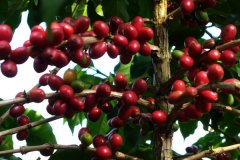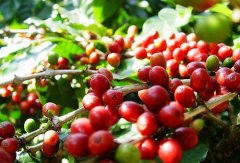Coffee beans from Yemen and Ethiopia are called Mocha mocha coffee.
The term "fine coffee" was first put forward by Ms. Knudsen of the United States in Coffee and Tea magazine. At that time, Ms. Knudsen, as a coffee buyer of B.C. Ireland in San Francisco, was very dissatisfied with the neglect of the quality of raw coffee in the industry, and even some big roasters mixed a large amount of Robesda beans in the comprehensive beans, so she put forward the concept of fine coffee to advocate the improvement of the quality of the industry. This term is used to describe coffee beans with distinctive flavor characteristics that grow in a special environment. Its use in international coffee conferences makes it spread rapidly.

Mocha Mattari: coffee beans from Yemen and Ethiopia are both called Mocha, known today as Mocha, from the port of Yemeni city of Muha, once the largest coffee distribution center in the Islamic world. It is generally believed that the quality of mocha coffee produced in Yemen is higher, and the highest quality coffee bean produced in Yemen is Mattari. The palate is full-bodied and sour, with a floral finish reminiscent of wine. As the earliest variety introduced into Europe, it is so popular in Europe and America that coffee shops such as Starbucks specially invented coffee é Mocha (Espresso+ chocolate syrup + milk foam) that imitates "Mocha flavor" with Espresso. There is a problem of preference for Asians. I personally accept it, but there are people who don't want to drink it at all.
Important Notice :
前街咖啡 FrontStreet Coffee has moved to new addredd:
FrontStreet Coffee Address: 315,Donghua East Road,GuangZhou
Tel:020 38364473
- Prev

The Golden Manning of Indonesia
Coffee made from fine coffee beans. Now the coffee is mainly made by hand-brewing coffee to give full play to the flavor of the coffee bean itself. Boutique coffee does not have a bad effect on people's health, but drinking it in moderation is beneficial. Sumatra Mandheling G1 (or Golden Mandheling): Indonesia's gold Manning, we are the most famous here.
- Next

Blue Mountain No.1: the Blue Mountain that is too famous
According to Ms. Knudsen, people started drinking boutique coffee, but later, due to the growing demand for coffee, the discovery and use of new coffee varieties led to the decline of coffee quality. later, people even began to dislike this bad coffee and began to turn to other drinks. In this case, Ms. Knudsen's renewed recognition
Related
- Does Rose Summer choose Blue, Green or Red? Detailed explanation of Rose Summer Coffee plots and Classification in Panamanian Jade Manor
- What is the difference between the origin, producing area, processing plant, cooperative and manor of coffee beans?
- How fine does the espresso powder fit? how to grind the espresso?
- Sca coffee roasting degree color card coffee roasting degree 8 roasting color values what do you mean?
- The practice of lattes: how to make lattes at home
- Introduction to Indonesian Fine Coffee beans-- Java Coffee producing area of Indonesian Arabica Coffee
- How much will the flavor of light and medium roasted rose summer be expressed? What baking level is rose summer suitable for?
- Introduction to the characteristics of washing, sun-drying or wet-planing coffee commonly used in Mantenin, Indonesia
- Price characteristics of Arabica Coffee Bean Starbucks introduction to Manning Coffee Bean Taste producing area Variety Manor
- What is the authentic Yega flavor? What are the flavor characteristics of the really excellent Yejasuffi coffee beans?

